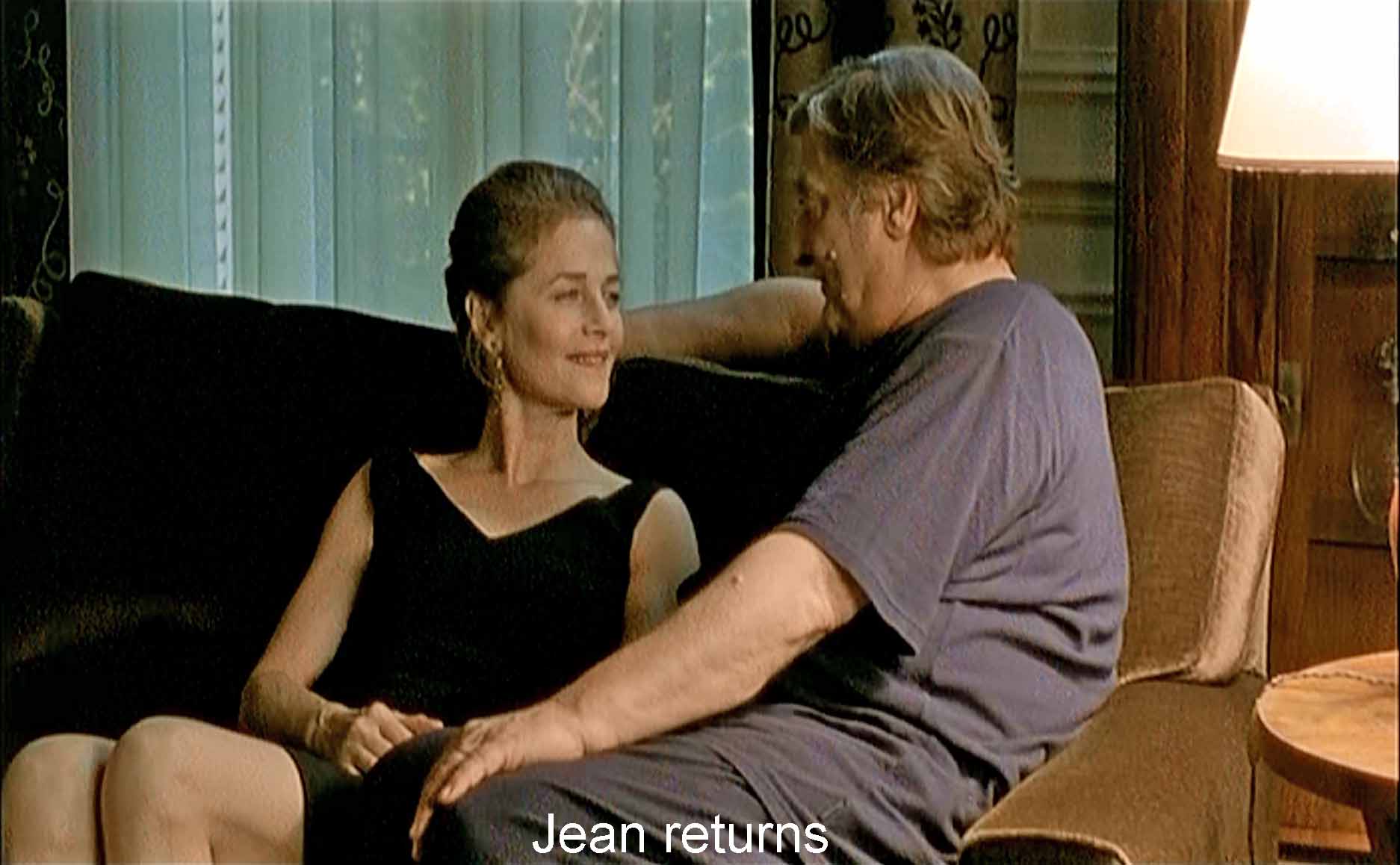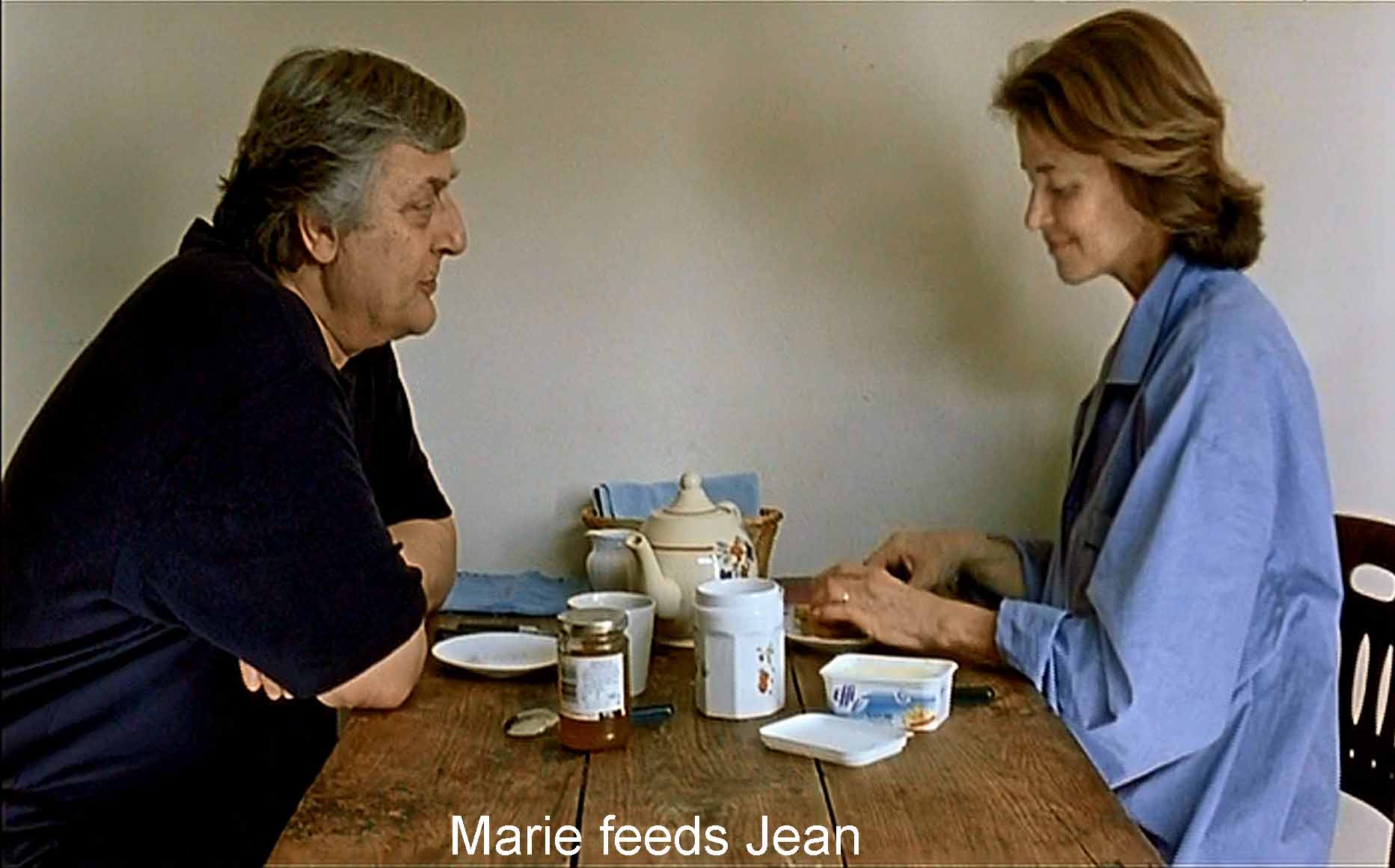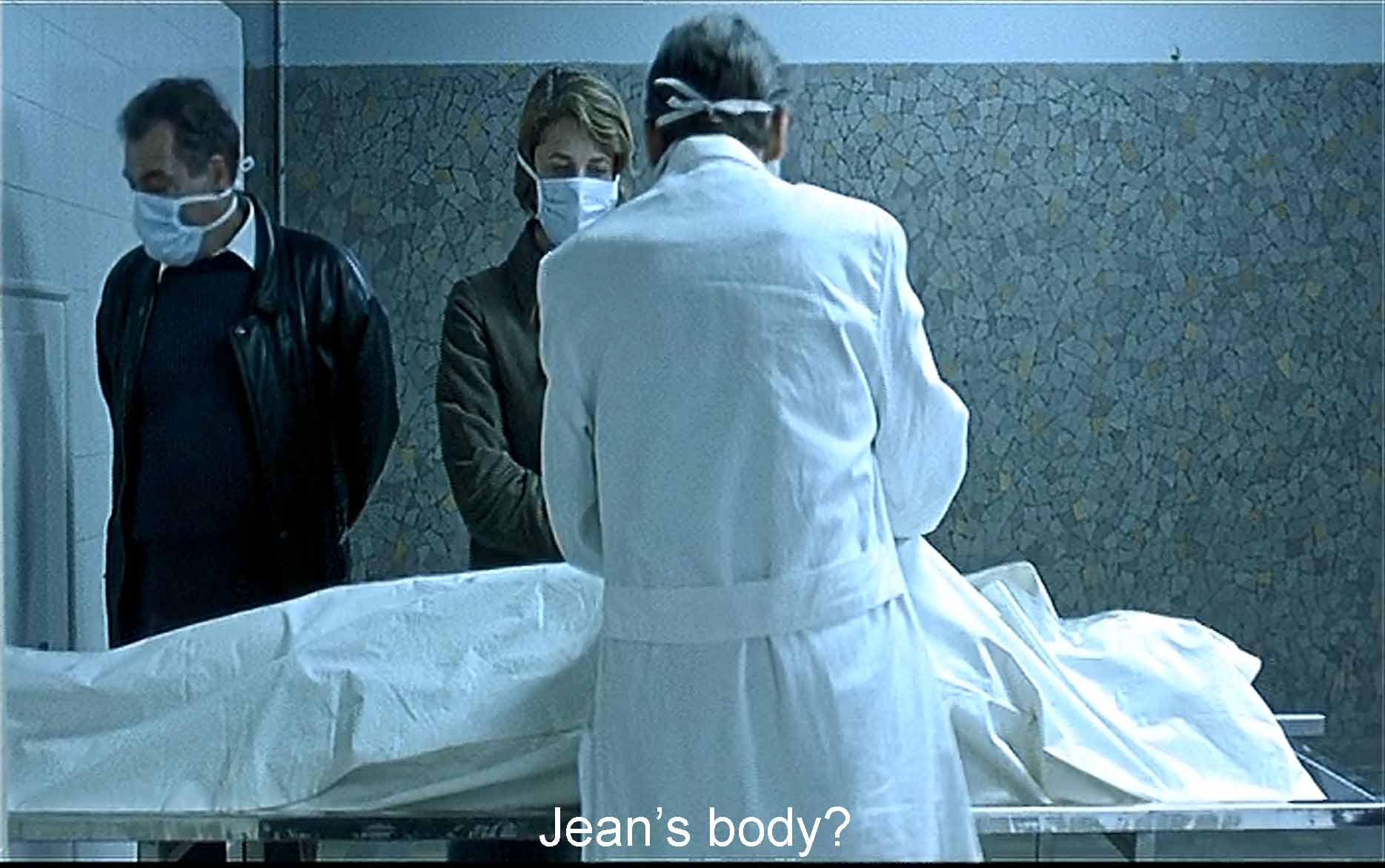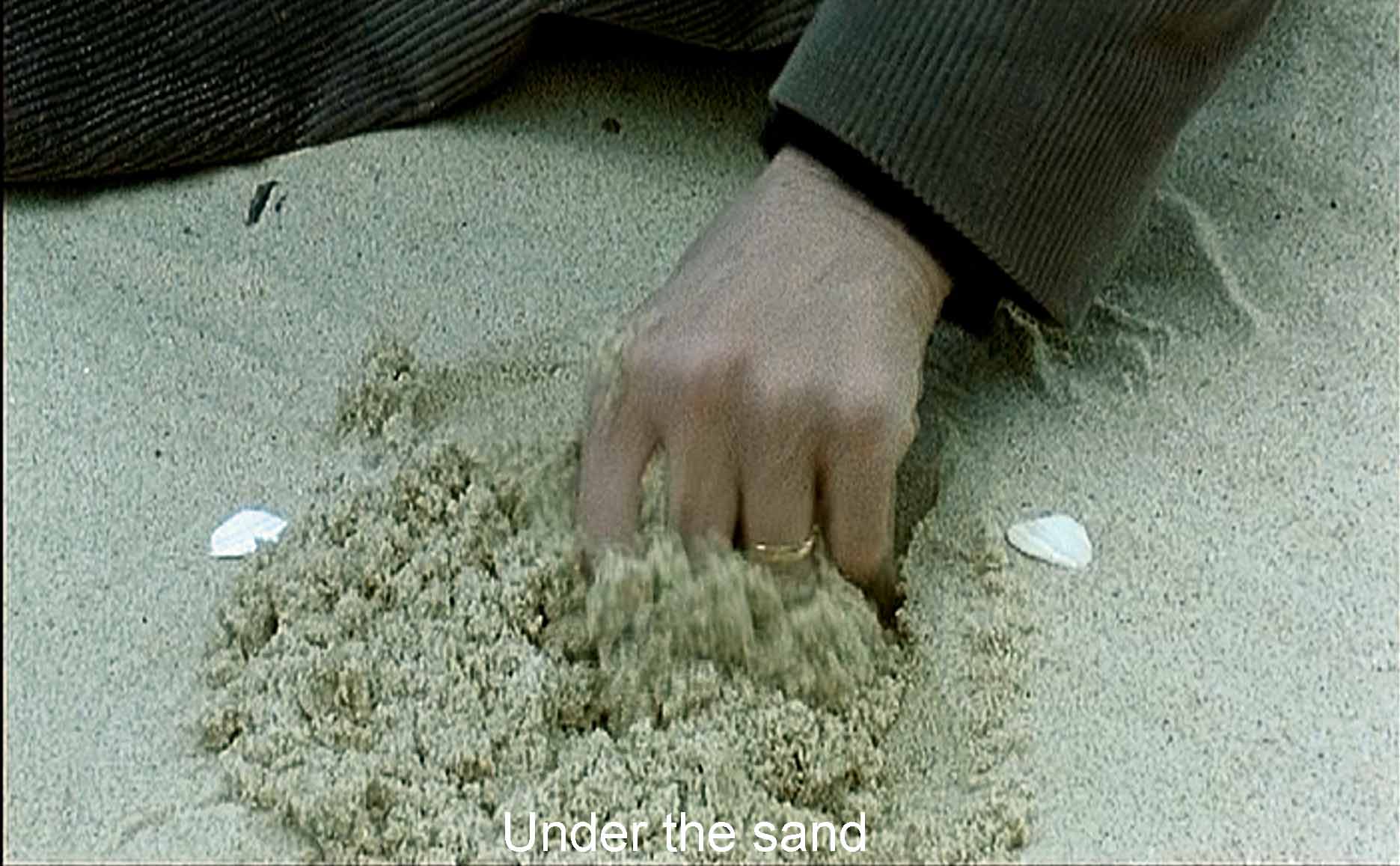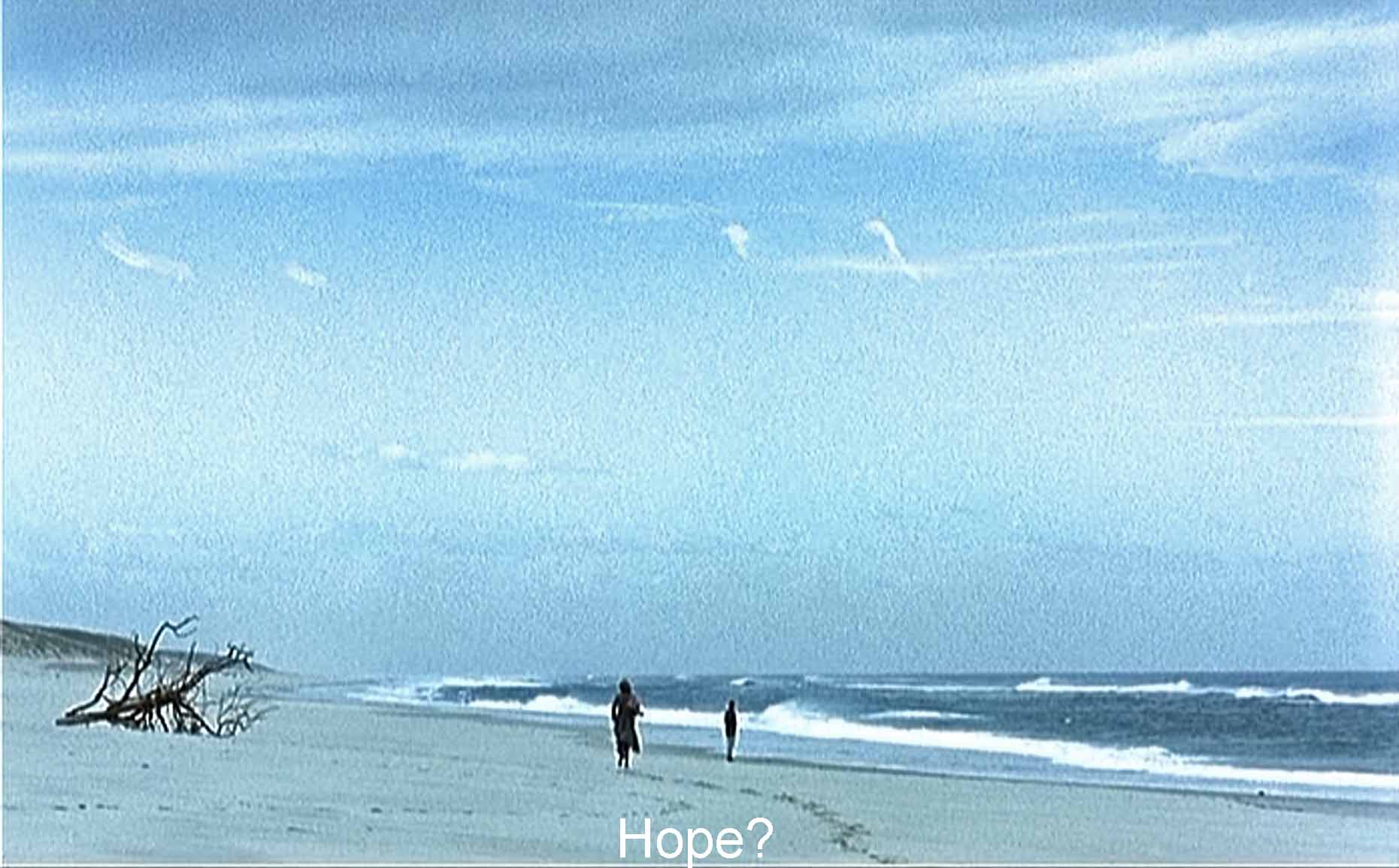Jean and Marie Drillon (the superb Charlotte Rampling) are comfortably married fifty-year-olds with no children. They go on a beach vacation, and Jean goes for a swim. He never comes back. Everybody concludes he drowned, but Marie sees him, feeds him, lets him touch her. She speaks of him as alive, and her friends (and a lover she acquires along the way) think she is mad. But I think that’s too simple. This film asks, What does it mean to have a body, to be a body, to lose a body?
From the point of view of the movie, it is a fact that Marie sees him, feeds him, and lets him touch her. It is tempting to think Ozon is showing us a widow’s denial or delusion. But a denial would be purely mental. Two psychiatrists of whom I have read tried it that way. A French psychiatrist that Ozon consulted concluded that this denial or delusion lets Marie keep her sanity. An American psychiatrist, in an essay, diagnosed a failure of mourning that led to Marie’s going insane. I think Ozon is after bigger game than a portrayal of a widow in denial.
I think the film poses, not a psychiatric issue, but a filmic one, a metaphysical one, if you will. Jean is a physical presence. Ozon doesn’t use any of the usual cinematic signs that he is switching from reality to delusion, no dissolves, no sudden changes in color or music, no fades or de-focusing. This is not a dream or a denial or a delusion. Jean is simply there. Ozon is asking us to believe the impossible.
We sometimes console ourselves with the idea that the dead live on in the memories of the living. But Ozon counters, if you do not have a body, you are not alive. Consider the opening shots. They take us from a featureless Seine to a highway crowded with vacation-bound cars to our couple, Marie and Jean, driving south, and changing drivers, body positions, as they get tired. They pull into a rest stop where Marie uses the toilet and Jean buys a coffee. Bodies—Ozon has established his theme. Bodies, what forms a toroid around our digestive system, what gets tired, what drives a car, what sits here or sits there, bodies are who we are.
In that way, Ozon is asking us to think about our bodies differently than we usually do. What is it to be a body, have a body, lose a body? What does it mean to be a physical, bodily presence? It means you are alive. To be alive is to have a body. Marie’s wish that her husband be alive translates into his being a body and having a physical presence.
Surely this is a childishly simple idea. But Rampling’s fine acting gets me to believe, really believe it. The dead Jean Drilllon (Bruno Cremer) and the living best friend Amanda (Alexandra Stewart) and the living lover Vincent (Jacques Nolot) are equally there—why? Because they all have bodies on the screen.
I will confess. When I think of me, I think of me as the thinking, feeling me, the mental me. Sometimes I think of the me that will be left when I die as the parenting me with children and grandchildren or the authorial me with books and articles. But Ozon would reply, the essential you is not your great thoughts, your achievements political or scientific or literary or artistic, or your children or your gender identity or your racial identity. The essential you is your body. This is a truth harshly driven home to me as I age, as the number of medications and ailments and trips to doctors multiply. Ozon is reminding us that we are, when all is said and done, bodies and mortal.
There is also something about film here. We see the actors, notably Charlotte Rampling in a much-praised performance, as bodies before us. But, of course, they are not bodies. They are merely light. It is our minds that magically give them bodily presence, just as it is Marie’s mind that gives her husband a real bodily presence. In a sense, when we watch a movie, are we grieving that these people who we feel are physically present before us are not present, but are in a sense and sometimes literally, dead? As Henry Vaughan’s poem has it, “They are all gone into the world of light.”
I see them walking in an air of glory,
Whose light doth trample on my days:
My days, which are at best but dull and hoary,
Mere glimmering and decays.
The French critics say that Ozon and some of his contemporaries are creating a genre, le cinéma du corps, movies of the body. Ozon does indeed show graphic homosexual scenes in some of his movies, and he always deals with the bodies of his actors. Here he insisted on Charlotte Rampling as not only a superb actress, but a woman unafraid to show her still beautiful fifty-year old body. He chose Bruno Cremer as Jean because Cremer was heavy-set, a strong presence. And he played Inspector Maigret in a highly popular series in France. Audiences would recognize and remember him, even though he disappears early in the film. A bulky, slow-moving actor, we would feel his bodily absence, and when he returns we would feel his presence. As Marie laughingly says to her newly-acquired lover, “You are light. My husband was heavy.” And ultimately she dismisses him with a crushing “You don’t measure up.”
This is one of several ways Ozon focuses us on bodies. There are the two naked German tourists Marie inquires of. She comments on Vincent’s body. There is the masturbation scene with hands all over Marie’s body. There is the grisly body the police find and identify as Jean. And finally, of course, there is the man standing on the beach whom Marie believes or hopes is her husband.
That last beach scene explains the puzzling title. Marie grinds her hand into the sand, under its surface, as she cries at the police insistence on her husband’s death. Then she sees a man standing on the sand, not under it, and runs toward him, hoping it will be her husband. She forces her body to feel gritty reality, then runs away from it.
In other films, Ozon develops the idea of bodies as such. In 8 Women he puts before us eight grandes dames of French cinema in the flesh. Audiences recognize them as who they are in life rather than the characters they portray. In In the House, the picture concerns the presence or absence of a student’s body in someone else’s house. And, of course, in his exaggeratedly “queer” movies, he makes audiences very aware of body with a capital B.
Ozon is a bold new filmmaker asking us to face up to our physical bodies in ways that many people find disturbing. Yes, he creates a radically strong physicality. But he also makes movies that critics value, that win awards, and that succeed at the box office. In doing so, he truly gives us a cinéma du corps that would scarcely have been possible in the twentieth century and maybe is still not possible in moralistic America, perhaps only in France.



